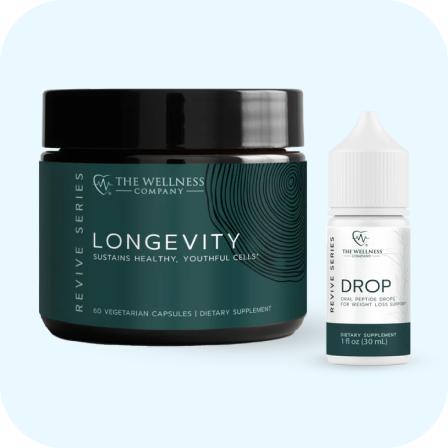Keystone Habits: A Simple Approach to Transform Your Wellness

“Your outcomes in life,” writes author James Clear, are “a lagging measure of your habits.”
This principle applies to just about everything. The amount of money in your bank account is a lagging measure of your spending habits. Your knowledge is a lagging measure of your learning habits. The state of your home is a lagging measure of your cleaning habits. And your wellness is a lagging measure of lifestyle habits such as sleep, nutrition, exercise, stress management and more.
It is no secret that our habits work behind the scenes to shape our lives in powerful ways. And while those first few examples are pretty straightforward, the last one – wellness – is influenced by so many habits that it can feel overwhelming to change. In the age of social media, it’s easy to feel bombarded from all angles by people telling us what we need to "optimize” to be healthy.
We’re supposed to meditate, lift weights, do cardio, eat the right things (but not too much and at the right times of day), follow our passions, devote ourselves to our family, friends and community, get out in nature, and take the right supplements. The list is never-ending, and the sheer pressure to do all this consciously feels like a full-time job. It can be paralyzingly difficult to cut through the noise.
Enter “keystone habits,” a concept coined by Charles Duhigg in his book “The Power of Habit.” A keystone habit is a single habit that ignites a ripple effect of positive change extending to other aspects of life. Like a central stone at the summit of an arch, a keystone habit holds the whole system together. Think of it like a “lead domino” which initiates a chain of events down the line. Thoughtfully selecting one keystone habit on which to focus is an elegant way to make other habits easier, while reducing overwhelm and decision fatigue.
Identifying Your Keystone Habit
Discovering your keystone habit requires some reflection, but it’s well worth it to spend the time on the front end. Grab a pencil and paper or open a note on your phone. Make a list of all the habits you can think of – things you do on a typical day from the moment you wake up to the moment you go to sleep. Include everything. Be as detailed as possible. Try to sketch out a whole day – what and when you eat, how you commute to work, screen time habits, if and when you exercise, how you wind down at the end of your day, and so on and so forth.
Then, review the list and ask yourself the following questions: Is this behavior helping or hindering my wellness? Does this behavior align with the type of person I want to be? As you do this exercise, you’ll inevitably see a lot of deficiencies in your routine. Now, here’s the key: rather than committing to changing all of these habits at once (a plan likely to fail), pick one that you feel might have a ripple effect on other habits on the list.
A Case Study
I'll illustrate how this approach works with an example. A client of mine, who I’ll call Beth, did this exercise and suspected that poor sleep might be one of her “lead dominos.” But it’s not specific enough to simply vow to “work on sleep.” We needed to drill down to specific, controllable behaviors. In reviewing her sleep hygiene habits, Beth mentioned that she scrolled her phone every night before bed. Sometimes she would “doom-scroll” political twitter; sometimes she would peruse cute cat videos. Nonetheless, upon reflection, she noticed that this tended to get her brain moving in a million directions, making her feel scattered and anxious.
Scattered and anxious aren’t exactly states that are conducive to quality sleep, so after finally going to sleep, she woke up feeling groggy in the morning. This exhaustion, she identified, reduced her willpower to prepare a healthy breakfast rather than hitting the McDonald’s drive-thru on the way to work. Having started her day with one unhealthy choice, the familiar feeling of shame would start to creep in, and by mid-morning – in addition to a nasty sugar crash – she already felt like the day was a write-off. Consequently, she wasn’t as present with her work and was less likely to hit the gym on her way home, which only increased the chances she wouldn’t feel tired by bedtime. This cycle would repeat, day after day, week after week, and though she was trying to eat better and exercise more, she felt she just didn’t have the discipline.
Rather than berate herself over all her bad habits, I suggested she experiment with the keystone habit approach, ignoring diet and exercise altogether and focusing exclusively on what she thought might be the lead domino for her health: scrolling on her phone before bed. At my insistence, she bought a cheap alarm clock so she had no excuse for having her phone by her bed to use as an alarm. After dinner, the phone stayed in the kitchen, and she committed to one new habit: reading at least a page of a physical book before bed.
After a week of this routine, Beth felt her sleep improve significantly. Waking up refreshed, she had more willpower to make good nutritional choices throughout the day. She felt more focused and present at work. Because she didn’t end her day exhausted, she exercised more often, without having to force herself to.
She made one conscious change. But that small upstream change had dozens of positive downstream consequences.
Expanding Your Focus
Here’s the beautiful thing: once one keystone habit becomes second-nature, you can expand your efforts, finding a different “lead domino” to focus on. Maybe it’s exercise. Maybe it’s meditation. Maybe it’s meal prep. Once you build some momentum, the great thing about this method is that many keystone habits reinforce one another, in various ways.
Bottomline
In our modern age of information overload, keystone habits are a great way to cut through the noise and simplify your wellness routine. By identifying your “lead domino,” and zeroing in on one key habit at a time, you’ll trade overwhelm for simplicity, build momentum, and make consistent progress towards your goals. Embrace the power of keystone habits, and prepare to be amazed at the transformation you can achieve, one habit at a time.
References
[2] Duhigg, C. (2012). The power of habit: Why we do what we do in life and business (Vol. 34, No. 10). Random House.






















